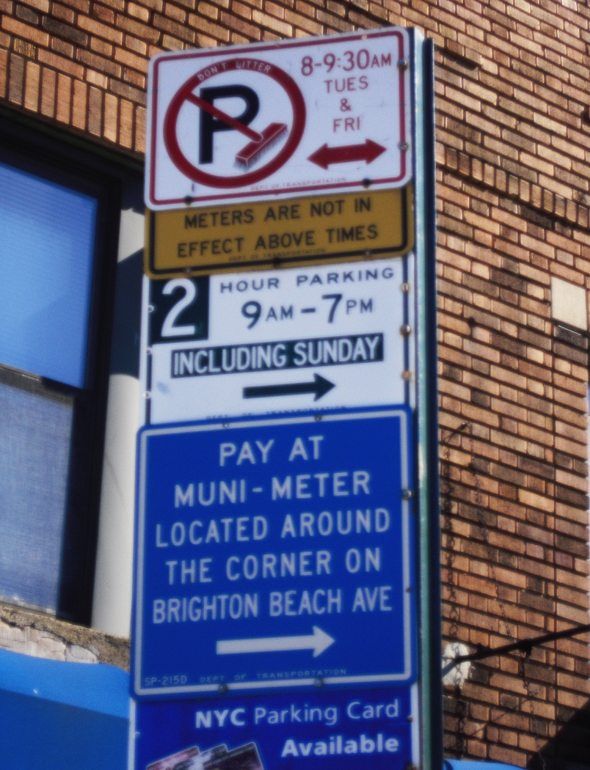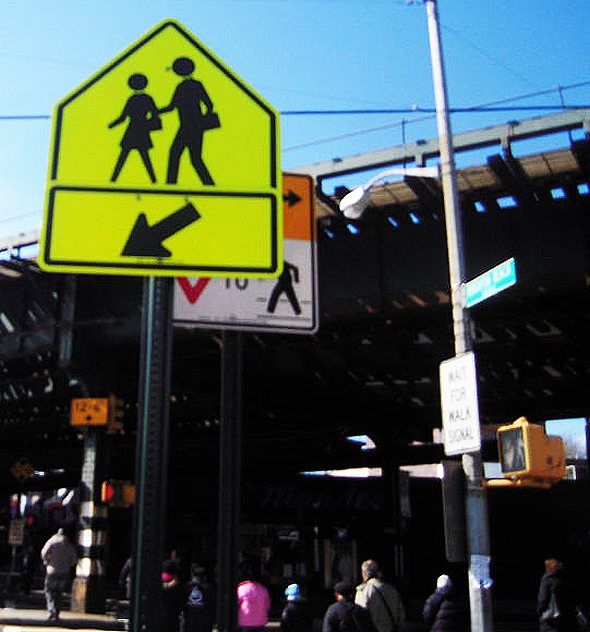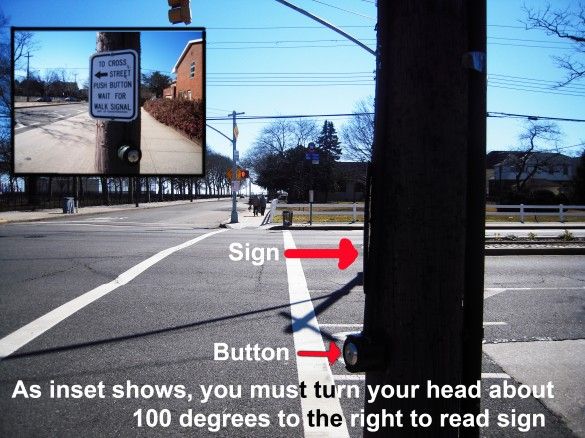One Change That Should Not Be Made And Others That Are Long Overdue

THE COMMUTE: The MTA financial situation could go from bad to worse. First we have the state stealing money from the MTA. Now we have the federal government trying to do something similar.
A proposed House bill ends the practice of linking the Highway Trust Fund, financed by the gas tax, to mass transit and reduces federal funding to transit. As MTA Chairman Joseph Lhota stated, without dedicated funding the MTA is in serious trouble:
“That billion dollars in funding is used to buy rail stock and switching and signaling equipment, critical to maintaining our system in a state of good repair.”
Republicans are now reworking that bill and there is also a competing Senate bill.
Reopening A Station Entrance
In local news, I suppose we should all be rejoicing that, after more than 40 years, the MTA finally reopened a shuttered entrance at Fourth Avenue and Ninth Street in Park Slope. But is the MTA doing this primarily for the customer, as they claim, or is it more to take advantage of neglected real estate they can now rent?
The station entrance, like many others, was closed in the 1970s when the city’s crime wave was hitting new highs and the city’s budget crisis, as well as the MTA’s, caused the MTA to look for ways to save money. They chose to close many lightly used station entrances or what they called duplicate entrances, like the ones on both sides of Fourth Avenue.
Particularly hard hit was the IND subway whose stations are spaced farther apart than the lines built earlier by the IRT or BMT. Many IND stations have entrances at the ends of the platforms rather than in the center. Those entrance and exit closings resulted in some people having to walk the entire 600-foot platform to the exit, and then walk the same distance again, once above ground and then another half mile to reach their destination.
The 1970s also saw an increase in deferred maintenance and reduced bus service across the board. Unlike recent service cuts, the ones in the 1970s affected the heaviest and most crowded bus routes like the B46 and B41, giving rise to gypsy cabs, which later evolved into today’s dollar vans. Some of those cuts were restored when MetroCard allowed for the creation of free bus / subway transfers in 1997, which greatly increased ridership.
How many more station entrances, such as the one at Fourth Avenue, also need to be reopened? The original reasons for closing them (high crime and the need to pay station attendants) are no longer valid. Although there is expense in reopening these closed exits and maintaining them, there are benefits to be gained as well. However, most will remain shuttered since, unlike Fourth Avenue, they do not provide the opportunity for the MTA to use its real estate for rental purposes.
Also, why should it have taken so long to make such a minor improvement? If it took more than 20 years to obtain the needed funding for this small but important change, what hope is there that we will ever be able to accomplish any major improvements?
Department Of Transportation (DOT) Overdue Changes

Keeping with the theme of changes that are long overdue, let’s change the focus to DOT. What could be their excuse for not updating signage or fixing problems they have been made aware of? Take the sign, for example, on Brighton 6th Street, which still asks you to feed the meters on Sunday although it has been more than six years since the law was changed making Sunday parking free. Unknowing motorists and visitors to the city are still paying on Sundays and perhaps summonses are issued on Sundays as well. Who knows how many others like it still remain because of DOT’s sloppiness?
Or how about the taxi stand on Coney Island Avenue south of Brighton Beach Avenue, just one block away? When was the last time you saw a taxi stand or park there? It has been more than 14 years since taxis would line up there to illegally transport Kingsborough College students for a dollar a head, cramming four students at a time into a taxi, yet the parking restriction remains.

How many other outdated signs are there that need to be updated? How many potential parking spaces are lost because the reason for the signage no longer exists? On Ocean Parkway, for example, I noticed one banned parking space in the middle of the block in front of a private residence. Today, what could possibly be the reason for that? There is no consistency why parking is allowed at some T intersections, but not at others. The point is that these anomalies would not exist if DOT periodically reviewed its signage. Instead, they only make changes in response to complaints or accidents.
Even when DOT is notified, it can take years for them to correct a problem if they do so at all. Several years ago I reported a speed limit sign on Corbin Place that was hung too low and dangerous for pedestrians. The sign was replaced one month later at a proper height but wasn’t fastened correctly. It fell off after only one month during the first big wind and it was never replaced again although I notified DOT that it had fallen off.

I also reported a mistake in their parking regulations database more than a month ago and it still has not been corrected, but I did get an automatic e-mail reply the following day thanking me for reporting a defective sign that they will investigate.
What Is Wrong With The DOT Sign Installers?
Several years ago I reported a one way sign blocking a street sign at Avenue Y and East 11th Street. It still has not been corrected.

When I reported three school crossing signs that appeared in the same week, all blocking Yield to Pedestrian signs, two of the Yield to Pedestrian signs at West End Avenue and Cass Place / Shore Boulevard were promptly removed, instead of being relocated where they could be seen. The third one at the corner of Brighton Beach and Coney Island Avenue still remains.

I didn’t even bother reporting the school crossing sign completely blocking a bus stop sign near St. Marks Church.

How Competent Is DOT?
When the blinking yellow light was installed at Oriental Boulevard and Ocean Avenue several years ago, I wrote to inform them that they placed the signs in the wrong place, notifying the pedestrians that they have to push the button for the walk signal to light up and the traffic signal to change to red for Oriental Boulevard. To be seen, it is necessary to turn your head 90 degrees or more to the right to read the sign. When walking you generally look straight ahead of you, not 90 or 100 degrees to the right. Consequently most visitors to the park and beach do not even see the signs and generally cross on the blinking red light and Don’t Walk sign. Some even push the button when they want to cross Ocean Avenue, instead of Oriental Boulevard. DOT responded that they sent someone to investigate and failed to see any problem with the signs. Do you see a problem from looking at the picture?

I guess I was correct when I called them “a bunch of idiots.”
Is Safety Really DOT’s Primary Concern?
DOT claims that safety is their primary concern. However, when a community in Queens once requested a change at a dangerous intersection, DOT responded that no one was killed there yet. Also, they do not replace lane markings until they are almost totally worn out, and they never check the length of yellow traffic signals, some of which are much less than the required three-second minimum.
Look at the two videos I took five years ago at Sheepshead Bay Road and Shore Parkway south service road where the amber signal alternated between one and one third seconds and one third of a second in length. After I complained, the length of the amber signal was increased to about one and a half seconds. A year later it was increased to about two seconds, and now it is finally correct at three seconds long.
I wonder how many accidents are caused by:
- Left turn lanes that appear without any upcoming warning, causing unfamiliar motorists to switch lanes at the last possible moment;
- Lanes disappearing or merging without any warning;
- Dark sections of highways in the city due to lamp posts that are non-operational for three months or even a year or longer;
- Amber traffic signals that are excessively short because they are not periodically calibrated or checked unless there is a complaint or accident;
- Lane markings and directional or street signs that have not been replaced for years, such as the street signs missing for three years at Sheepshead Bay Road and Emmons Avenue and;
- Unrepaired potholes.
We are just lucky we’ve had a very mild winter so pothole season shouldn’t be so bad this year.
The Commute is a weekly feature highlighting news and information about the city’s mass transit system and transportation infrastructure. It is written by Allan Rosen, a Manhattan Beach resident and former Director of MTA/NYC Transit Bus Planning (1981).



